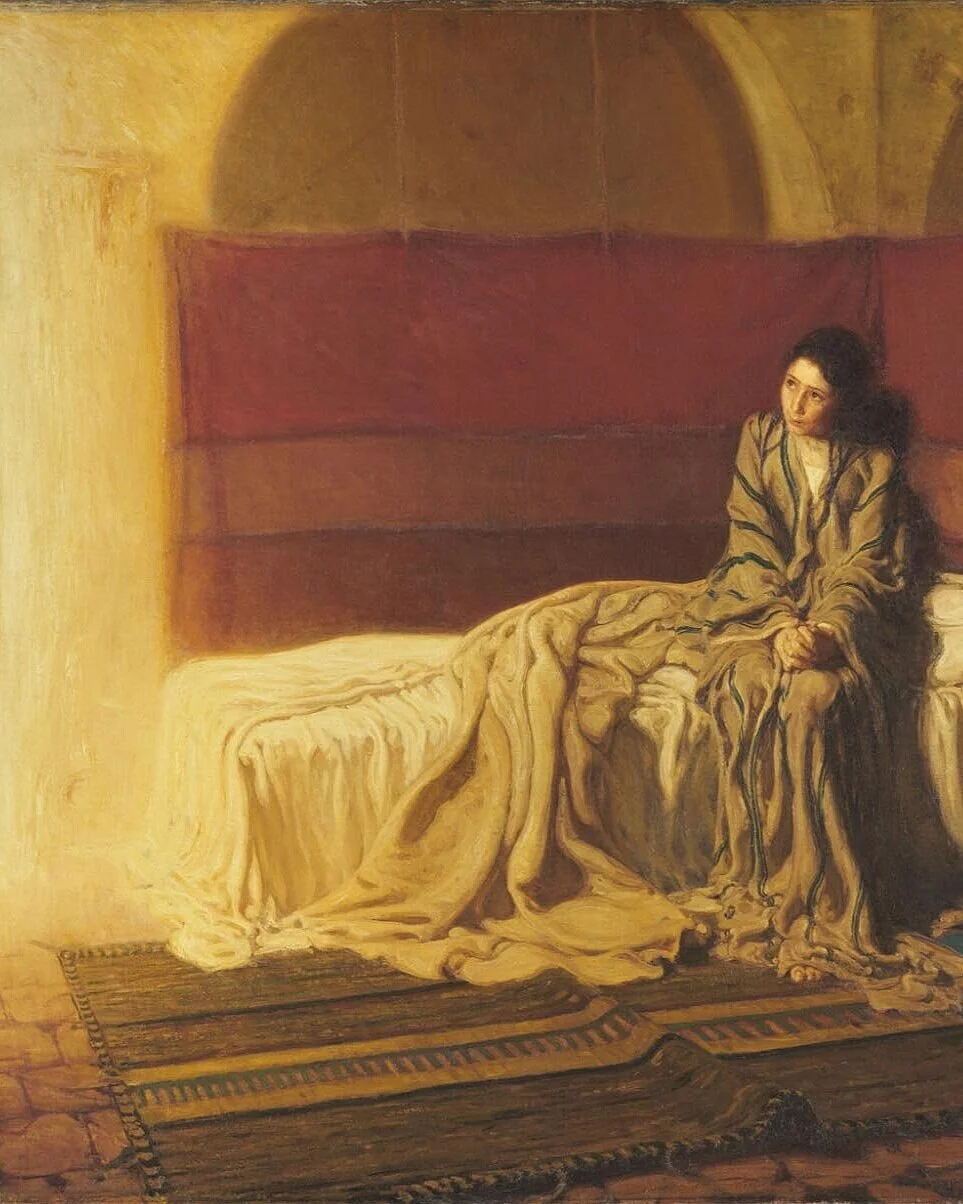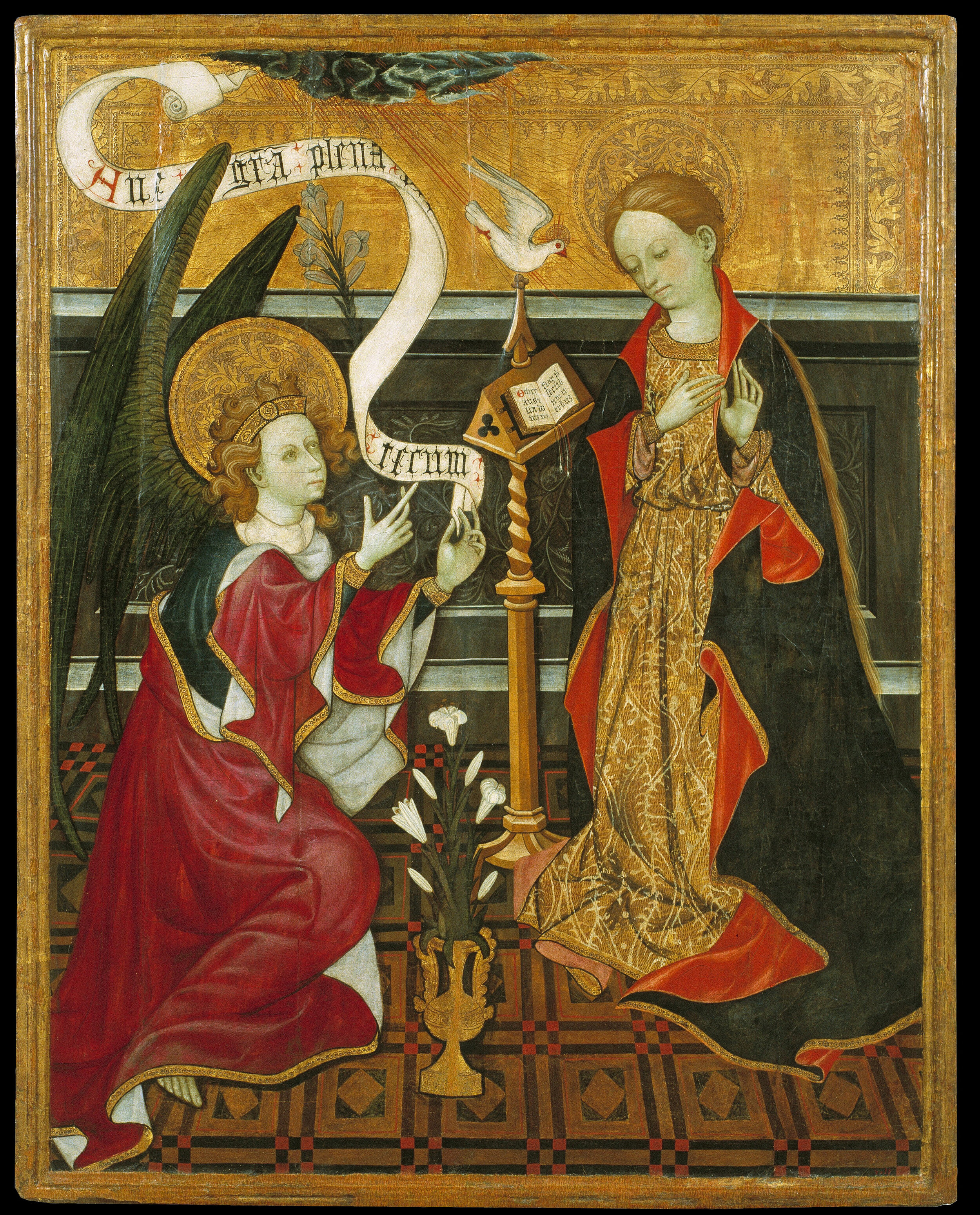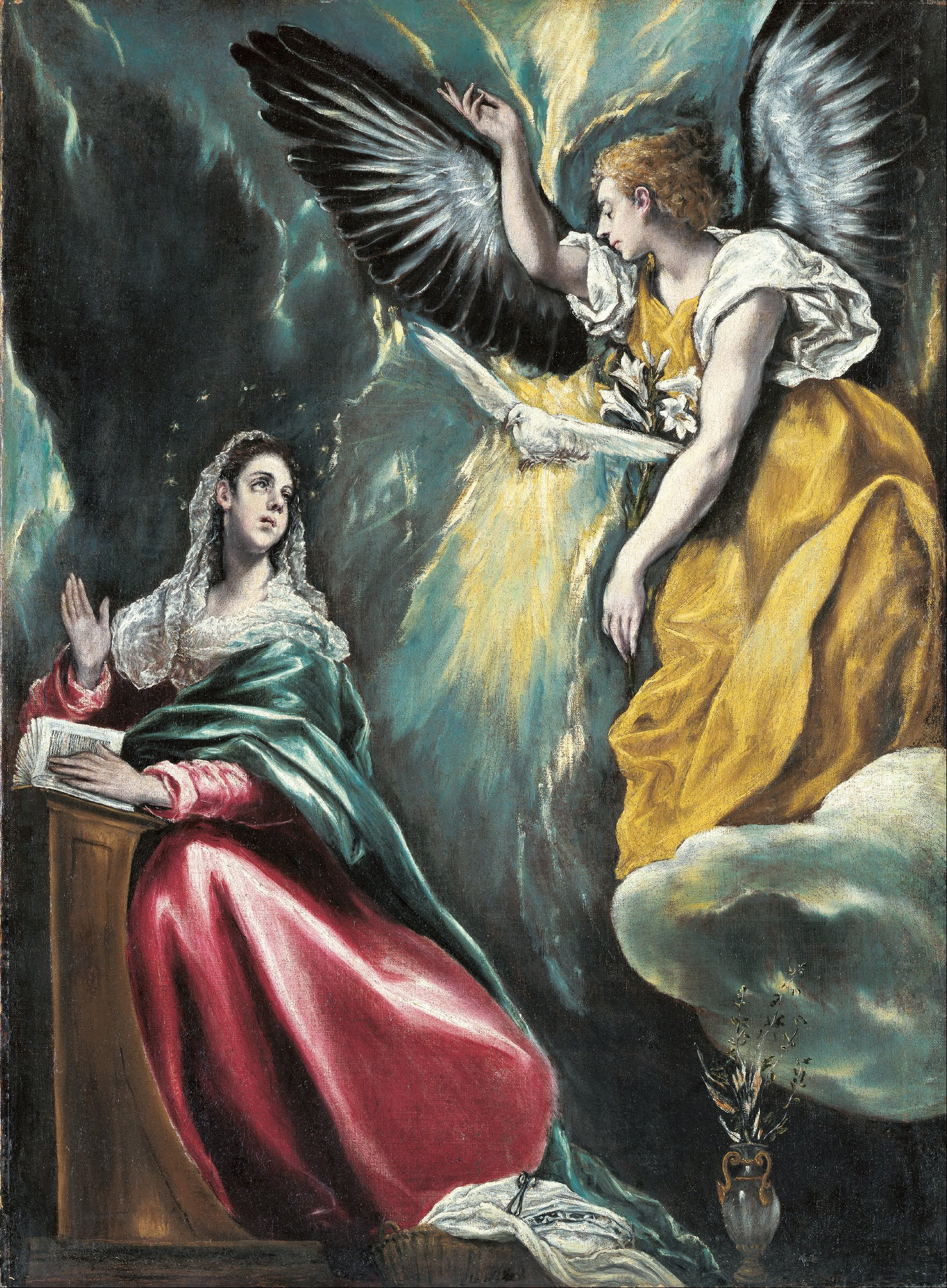Rx 39 / The Annunciation
Tanner's characteristic light is sweet and soft. Whether it emanates from a lantern or fire, or the sun or moon, it is always a source of goodness. It promises not clarity but acceptance and protection; even just touched by it, people are safe. The light is never wrathful or destructive. For Tanner, as for van Gogh, whose father was also a clergyman, light was love. — Michael Brenson, new york times, 1991.
In this late nineteenth-century depiction of the Annunciation, American painter Henry Ossawa Tanner gives a familiar narrative unconventional treatment. Mary, portrayed here as a young Jewish girl in Palestine, is remarkably unassuming—she wears peasant clothing and is without a halo or other holy attributes. The archangel Gabriel appears before her as a luminous shaft of light to announce that she will bear the Son of God. Mary looks on with reverential contemplation as the celestial beam illuminates her provincial abode with a sacred presence. In this extraordinary yet intimate meeting of the secular and the divine, Gabriel’s presence evokes a powerful other-worldliness, while Mary conveys an informality often missing in other artistic depictions of this moment.
Light is a central theme in many of Tanner’s religious works that portray holy messengers, including Daniel in the Lion’s Den and The Resurrection of Lazarus. Tanner intended his light suffused works to serve as a locus of sustained contemplation, comfort, and spiritual replenishment for the viewer. In illuminating the ordinariness and simplicity of his religious scenes, he intimates that all individuals have the ability to commune with one another and the divine. Light was as much a reverent subject matter for Tanner as it was a personal inspiration. Fascinated by Nikola Tesla’s recent innovations in electricity and illumination, Tanner imbued this sacred moment with reference to modern technology. Scholars have also speculated that he may have found solace in visual mysticism and the comfort- ing warmth of light—an analogy for God—given his conflicts with a secular world “disjointed” by racial injustice and inequality.
In 1879, Tanner enrolled as the only Black student at the Pennsylvania Academy of Fine Art (PAFA) where he trained with Thomas Eakins. Of his time at PAFA, he wrote,“I was extremely timid and to be made to feel that I was not wanted, although in a place where I had every right to be, even months afterwards caused me sometimes weeks of pain. Every time any one of these disagreeable incidents came into my mind, my heart sank, and I was anew tortured by the thought of what I had endured, almost as much as the incident itself.” Like many Black American artists and writers at the turn of the century, Tanner eventually moved to Paris in 1891, maintaining that he could “not fight prejudice and paint at the same time.”
reflections…
Light, as signified in The Annunciation, can herald profound personal transformation. For some, it merely illuminates. For others, it inspires and revitalizes. For Tanner, it was divine. In spaces of caregiving such as the hospital, light can be healing. Numerous studies over recent decades have demonstrated the benefits of proximity to light in the hospital, such as a window or skylight, including decreased narcotic use post-operatively and shortened length of stay for inpatients. In Tanner’s painting, we see light symbolically bring vigor to Mary’s room, and her life’s course, for that matter. How can we reimagine and redesign the hospital setting accordingly in ways that would render it equally powerful and transformative for patients and practitioners?
Extraordinary circumstances often find us, figuratively, in the humblest of spaces—casual and unprepared, not yet dressed for the occasion, and not yet confident enough to embrace the task without reservation. Some of the most arduous callings appear before physicians and other healthcare providers. Our psychological or emotional reactions may mirror the complexity and hesitation captured in Mary’s posture and facial expression. Perhaps Tanner intentionally emphasized those moments in our lives that transcend individual experience. While it is intimidating to be enveloped by the light, we are just as transformatively bathed in its warmth if we find the faith to pursue that calling—whether it be medical, spiritual, or artistic.
Yet many healthcare workers may feel that they are being challenged or tested in unprecedented ways. COVID-era writing frequently appeals to physicians’ sense of duty and commitment with phrases like “This is who we are” and “We run toward a fire.” As a recent Hastings Center report found, the virtuous dedication of medical professionalism during the COVID-19 pandemic has also become a vulnerability that has predisposed many to repeated psychological trauma and moral injury.
Art historian Kelly Jeannette Baker writes of Tanner,“Light was Tanner’s expression of God that radiated in his paintings to provide guidance and safety for humanity and offered comfort in the face of struggle and oppression. . . . When art became a ‘drudge,’ Tanner saw light that reinvigorated the process that he loved.” How might physicians likewise replenish or illuminate meaning and value in the face of the extraordinary and the ordinary?
sources
Anzaldua A, Halpern J. “Can Clinical Empathy Survive? Distress, Burnout, and Malignant Duty in the Age of Covid-19,” Hastings Center Report 51, no. 1 (2021): 22-27. DOI: 10.1002/hast.1216.
Baker, Kelly Jeannette. “Henry Ossawa Tanner: Race, Religion, and Visual Mysticism,” Master’s thesis, Florida State University, 2003.
Brenson, Michael. “For Tanner, Light was Love,” New York Times, February 17, 1991.
Hage, Emily. “Making the Modern Divine: The images of Henry Ossawa Tanner,” America: The Jesuit Review, March 19, 2021.
Joarder A, Price A. Impact of daylight illumination on reducing patient length of stay in hospital after coronary artery bypass graft surgery. Lighting Research & Technology. 2013;45(4):435-449. doi:10.1177/1477153512455940.
Park MY, Chai CG, Lee HK, Moon H, Noh JS. The Effects of Natural Daylight on Length of Hospital Stay. Environ Health Insights. 2018;12:1178630218812817. Published 2018 Dec 3. doi:10.1177/1178630218812817











